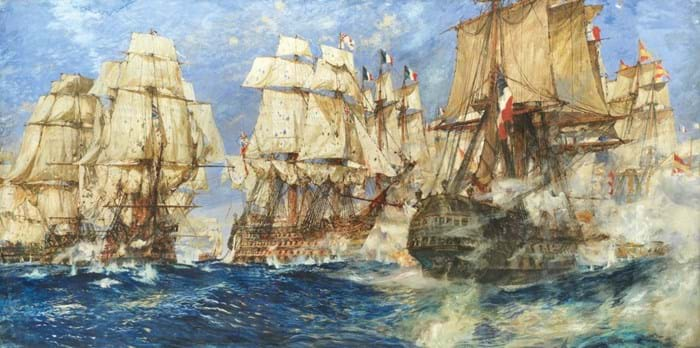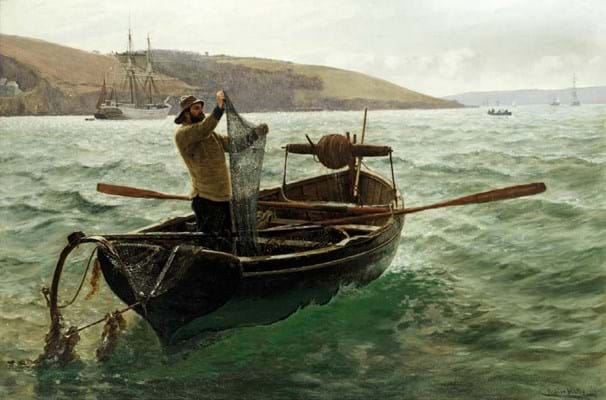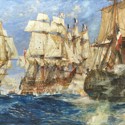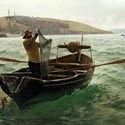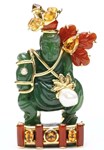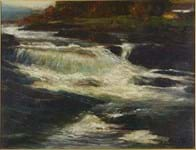They succeeded in increasing the value for top marine art, establishing the records of many a painter along the way.
But today these sales are much rarer beasts – the casualties of a wider strategy by the major players to move out of niche collecting areas.
The exception is Bonhams (25/20/12% buyer’s premium), which still holds regular sales in the market’s main hubs of London and New York.
Strong results
Its persistence was rewarded on October 18 when it posted one of the strongest set of results in the sector for some time.
The 119-lot auction, which took place in Knightsbridge and offered mostly traditional 19th and 20th century seascapes and ship portraits, posted a buoyant £640,000 total and an unusually high sell-through rate of 91% (around 75% is the norm).
The total was boosted by the £150,000 sale of a quartet of Horatio Nelson lots from a private British collection, including Nelson’s HMS Victory armchair (see ATG 2315), but the pictures held their own.
Bonhams marine picture specialist Rhyanon Demery said the addition of a handful of new, deep-pocketed private clients appeared to make the difference.
While demand persists from an increasingly private pool of buyers (middle-aged men with a passion for sailing and plenty of cash are now her primary clients), the biggest challenge is sourcing high-quality commercial examples that are new to the market by big names such as Montague Dawson (1890-1973). The artist, who is particularly popular with North American buyers, was largely absent from Bonhams’ sale.
The sole Dawson entry was an 18 x 35in (46 x 89cm) oil on canvas of the Second World War battleship HMS Howe. Commercially, Dawson’s battleships are not in the same league as his elegant clippers, and this example had failed to sell on two previous occasions in New York. Entered with a revised lower estimate of £10,000-15,000, it was a case of third-time lucky, and got away for £20,000, ironically to an American buyer. The flip-side to not having a big-money Dawson was that the sale did just as well without him.
Other big names filled the top spots on the day, among them the Victorian artist Charles Napier Hemy (1841-1917). Considered among the finest marine painters of his generation, he painted many of his canvases on his floating boat studio in Falmouth, Cornwall.
All six of Hemy’s canvases offered at Bonhams – some £67,000 worth – found buyers. The star was a large 3ft x 4ft 6in (93 x 1.38m) oil on canvas called Tipping Out a Shrimp Trawl, which is thought to have been painted on his floating studio in Falmouth in 1884.
Plenty of attractive trademark features impressed: the choppy greenish water, the fisherman holding up his net and Hemy’s preferred high horizon line.
Although it was fairly well known – it had passed through a clutch of different owners, including dealers Agnew & Sons and Canadian department store Eaton’s – this did not deter interest and it was knocked down to a private buyer at £46,000, against a £25,000-35,000 estimate.
Intense historical paintings full of action and colour were a speciality of Charles Edward Dixon (1872-1934). A regular exhibitor at the Royal Academy and a prolific painter, he produced hundreds of nautical scenes in watercolour and oil.
In April, Bonhams set a record for the artist when it sold an unusually large canvas by the artist of the Battle of Trafalgar for £46,000. In the latest sale, an even larger work from the battle was included on the back of that result.
The imposing 3ft 10in x 7ft 11in (1.18 x 2.41m) oil, titled Oak, Hemp and Powder, Trafalgar, 1805, had perhaps been intended solely for the Royal Academy where it was exhibited the same year it was painted in 1920.
Against a £20,000-30,000 guide, it was pursued to £50,000, a new auction record for the artist.
Montague version 2.0
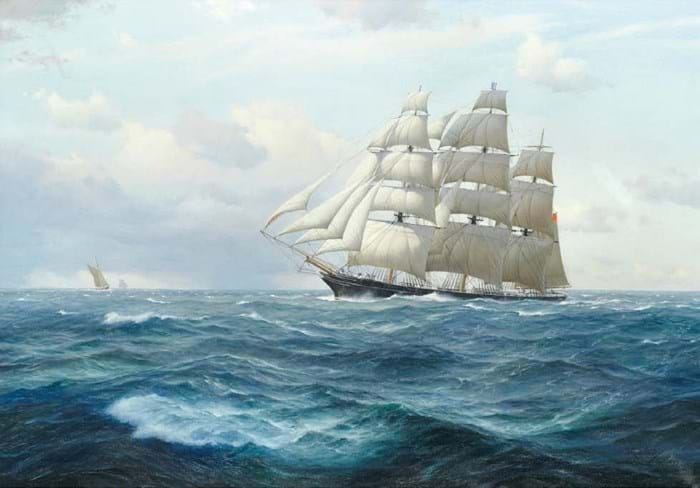
The China clipper Taitsing racing up the Channel by Derek George Montague Gardner – £14,000 at Bonhams.
Paintings by another Montague – the English painter Derek George Montague Gardner (1914-2007) – have been increasing in value since his death in 2007. Like Dawson, it is the artist’s traditional clippers, rather than the modern warships, that fetch the biggest sums.
Two appealing historical watercolours of 18th century Royal Navy ships and an attractive 2ft 4in x 3ft 3in oil each sold, bettering their guides to fetch £3500, £3200 and £14,000. The latter, pictured above, was deemed a particularly good example of the artist’s skill. It shows the British tea clipper Taitsing racing up the Channel during the Great Tea Race of 1866.
The race became legend when three clippers left the Min River in China on the same tide and docked in London 99 days later on the same tide. The Taitsing, which had left Foochow a day later and was laden with just over a million pounds of tea, docked in London two days later on September 9.


